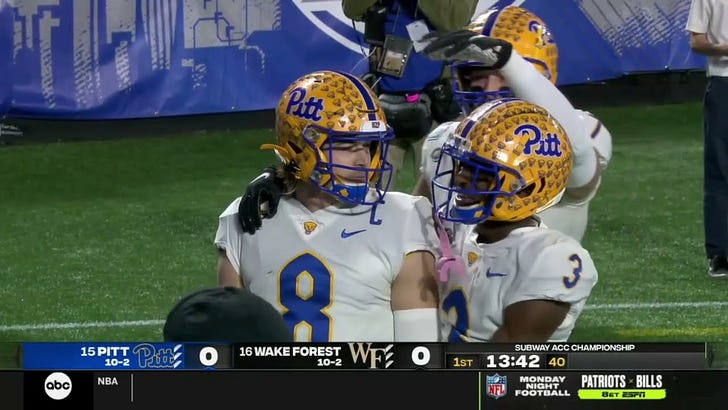Let's Talk About the Fake Slide
The NCAA should be commended (for once) on acting quickly to stop a problem before it started.
Last week we we had the ACC Championship game on in my house. I looked at my phone and missed the story of the week. My wife said we had to rewind it to see what I missed. It, of course, was this.
My wife (accurately) thought it was a smart play. I said that I had mixed feelings on it. It was absolutely a smart play, however it was also a very dangerous play for all involved. Not necessarily because of what Pickett did or did not do, but because of the ambiguity in created for future defenders pursuing a quarterback on the run.
The NCAA apparently saw it my way, and acted with uncharacteristically quick speed to make sure it will never happen again:
According to a memo from NCAA national coordinator of officials Steve Shaw, referees should interpret a fake slide as a player surrendering himself and should end the play.
"Any time a ball carrier begins, simulates, or fakes a feet-first slide, the ball should be declared dead by the on field officials at that point," the memo states. "The intent of the rule is player safety, and the objective is to give a ball carrier an option to end the play by sliding feet first and to avoid contact. To allow the ball carrier to fake a slide would compromise the defense that is being instructed to let up when the ball carrier slides feet first."
Good.
There were multiple issues I saw with the play, some of which is addressed in the rule interpretation above:
As the NCAA memo notes, defenders are “instructed to let up when the ball carrier slide feet first.” That’s because, in every other instance where a quarterback slides, the play is over. A defender that hits a quarterback at that point gets an unsportsmanlike conduct penalty and 15-yards tacked onto to the end of the play. That’s what made Pickett’s fake play so successful. Rewatch the footage and you’ll see two Wake Forest defenders give up on the play as he appears to enter the slide.
The play is, I think objectively, unfair. This isn’t a situation where you deke somebody, or run a trick play, or something like that. This is a situation where you are giving the opposition the choice of stopping the play to avoid a penalty or continuing play and risking a penalty. That’s not cricket.
The most important reason: somebody is going to get hurt. As I pointed out earlier, defenders know not to touch the ball carrier when they are giving themselves up. If this play remained legal and that was a certain ambiguity in sliding, it increases the likelihood that a ball carrier would get clocked while in the process of legitimately sliding. When you consider how a ball carrier slides legitimately and realize the likelihood of helmet-to-helmet contact on a defenseless runner (as shown in the clip below), that’s a serious problem.
That’s not to say that I don’t like what Kenny Pickett did, necessarily. It was within the rules at the time and he scored a touchdown in a scoreless game. But football is a copycat game and you know that Monday in practice teams were trying to figure out how to practice such a play.
The NCAA should be commended (for once) on acting quickly to stop a problem before it started.



